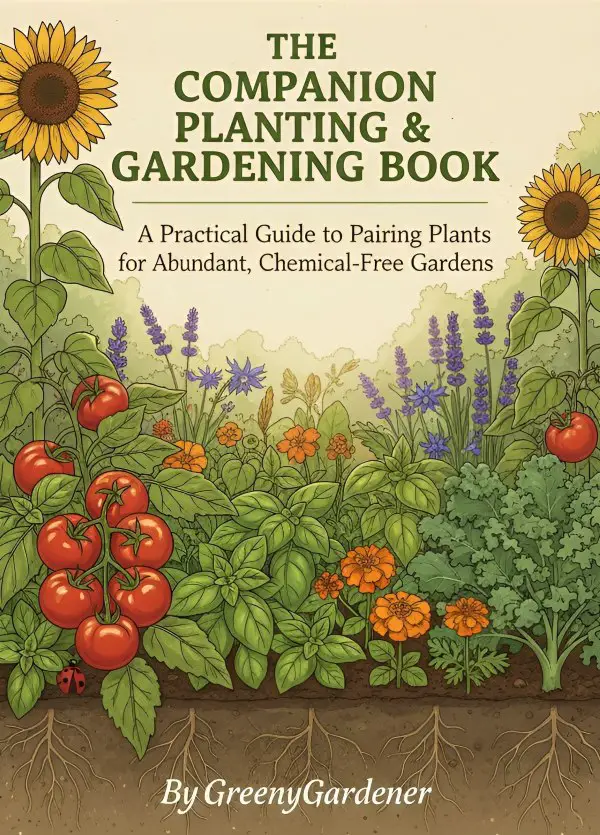Why Does My Aloe Vera Smell Like Onion? Causes and Solutions for Healthy Plants
Aloe vera is a beloved houseplant, cherished for its striking, fleshy leaves and its soothing gel, perfect for organic gardening enthusiasts and anyone seeking low-maintenance plant care. But what happens when your aloe vera starts giving off an unexpected onion-like smell?
If you’ve noticed this peculiar odor, don’t panic—it’s a common issue that many beginner and intermediate gardeners encounter. In this post, we’ll explore why your aloe vera smells like onion, how to address it, and how to keep your plant thriving with practical plant care tips.
What's On the Page
Understanding Aloe Vera and Its Natural Characteristics
Aloe vera, a succulent native to arid regions, is a staple in many homes due to its resilience and versatility. Known for its medicinal properties, it’s a go-to for soothing burns or adding to homemade skincare. Typically, aloe vera has a mild, earthy scent, especially when its leaves are cut or damaged. However, an onion-like smell can signal something’s off, and it’s often related to plant health, environmental factors, or even mistaken identity with similar-looking plants.
Before diving into the causes, let’s clarify what’s normal. When you break or cut an aloe leaf, it releases a gel with a slightly bitter, vegetal odor. This is due to aloin, a compound in the plant’s sap. However, a strong onion smell isn’t standard and usually points to specific issues we’ll cover below.
Why Does My Aloe Vera Smell Like Onion?
There are several reasons your aloe vera might smell like onion. Let’s break down the most common culprits and how to identify them.

🌿 The Companion Planting & Gardening Book (eBook)
Bigger harvests, fewer pests — natural pairings & simple layouts. $6.99
Get – $6.99
🪴 The Pest-Free Indoor Garden (eBook)
DIY sprays & soil tips for bug-free houseplants. $4.89
Get – $4.991. Overwatering and Root Rot
Overwatering is the number one mistake beginner gardeners make with succulents like aloe vera. These plants store water in their leaves, so they need infrequent watering. Excess moisture can lead to root rot, a condition where the roots become mushy and start to decay, often producing a foul, onion-like odor.
Signs of Root Rot:
Soft, mushy, or discolored roots
Yellowing or wilting leaves
A strong, unpleasant smell from the soil or base of the plant
How to Fix It:
Check the soil: Ensure it’s well-draining. Use a cactus or succulent potting mix, or make your own with sand, perlite, and potting soil.
Reduce watering: Water only when the soil is completely dry, typically every 2–3 weeks, depending on your climate.
Repot if needed: Remove the plant, trim away any black or mushy roots, and repot in fresh, dry soil. Ensure the pot has drainage holes.
Improve air circulation: Place your aloe in a spot with good airflow to prevent moisture buildup.
2. Bacterial or Fungal Infections
Bacterial or fungal infections can also cause an onion-like smell, especially if the plant is stressed or damaged. These infections often occur in humid conditions or when the plant’s leaves are wounded, allowing microbes to enter.
Signs of Infection:
Dark, soft spots on leaves
A slimy texture or unusual odor
Leaf discoloration or wilting
How to Fix It:
Remove affected areas: Use a clean, sharp knife to cut away infected parts, ensuring you sterilize the tool between cuts.
Apply a fungicide: For fungal issues, use an organic fungicide or a diluted neem oil solution.
Adjust humidity: Keep your aloe in a dry environment, ideally with humidity below 50%.
Avoid overhead watering: Water at the base to keep leaves dry.
3. Mistaken Plant Identity
Sometimes, the plant you think is aloe vera might actually be another species with a naturally onion-like smell. Plants like Haworthia or Gasteria, which resemble aloe, or even wild garlic (Allium ursinum), can be mistaken for aloe vera, especially by beginner gardeners.
Plants That Might Be Confused with Aloe Vera:
Haworthia: Small, rosette-shaped succulents with similar fleshy leaves.
Gasteria: Often has thicker, tongue-shaped leaves and a slightly different texture.
Wild garlic or onion grass: These have long, thin leaves and a strong onion scent when crushed.
How to Confirm It’s Aloe Vera:
Check the leaves: Aloe vera has thick, pointed, serrated leaves with a smooth, waxy surface.
Look for gel: Cut a leaf (sparingly) to see if it releases a clear, gel-like substance.
Research the source: If you bought or received the plant, verify its species with the nursery or a plant identification app.
4. Environmental Stress
Environmental factors like excessive heat, poor soil, or nutrient deficiencies can stress your aloe, leading to chemical changes in the plant that might produce an unusual smell. For example, high temperatures can cause the plant to release volatile compounds, mimicking an onion-like odor.
How to Address Environmental Stress:
Provide proper light: Aloe vera thrives in bright, indirect sunlight. Too much direct sun can scorch it, while too little light weakens it.
Maintain ideal temperatures: Keep your aloe between 60–80°F (15–27°C). Avoid placing it near heaters or drafty windows.
Use balanced fertilizer: Feed sparingly (once a month during the growing season) with a diluted, balanced fertilizer (e.g., 10-10-10) to support healthy growth.
Practical Tips for Healthy Aloe Vera Plant Care
To prevent onion-like smells and keep your aloe vera thriving, follow these organic gardening tips tailored for beginner to intermediate gardeners:
Choose the right pot: Use a terracotta or clay pot with drainage holes to promote air circulation and prevent waterlogging.
Water sparingly: Water deeply but infrequently, allowing the soil to dry out completely between waterings. In winter, reduce watering even further.
Use well-draining soil: A mix of 50% potting soil, 25% sand, and 25% perlite or pumice works well for succulents.
Monitor for pests: Check for mealybugs or spider mites, which can stress the plant. Wipe leaves with a damp cloth or use neem oil for infestations.
Propagate carefully: If you’re propagating aloe pups, ensure they’re planted in dry soil and avoid watering for a week to prevent rot.
Seasonal planting adjustments: In spring and summer, aloe grows actively, so provide more light and occasional fertilizer. In fall and winter, let it rest with minimal water.
When to Seek Professional Help
If you’ve tried the above solutions and the onion smell persists, or if your aloe vera shows severe signs of distress (e.g., widespread wilting or blackening), it might be time to consult a local nursery or plant expert. They can help diagnose rare issues like systemic infections or chemical contamination in the soil.
Companion Plants for Aloe Vera
To create a vibrant indoor or outdoor succulent garden, consider pairing your aloe vera with these low-maintenance, odor-free companions:
Echeveria: Colorful rosettes that thrive in similar conditions.
Sedum: Hardy succulents with varied textures and shapes.
Sempervivum (Hens and Chicks): Cold-tolerant and easy to grow.
Jade Plant: A classic succulent with glossy, round leaves.
These plants share aloe’s love for bright light and minimal water, making them ideal for organic gardening setups.
Summary: Keeping Your Aloe Vera Healthy and Odor-Free
An onion-like smell from your aloe vera is usually a sign of overwatering, root rot, infection, or mistaken plant identity. By addressing these issues with proper plant care techniques—like using well-draining soil, watering sparingly, and ensuring good light—you can restore your aloe’s health and keep it thriving.
Regularly check your plant for signs of stress, and don’t hesitate to trim away damaged parts or repot when needed. With these tips, your aloe vera will remain a low-maintenance, beautiful addition to your home or garden, free of any oniony surprises.
For more gardening inspiration, explore seasonal planting guides or dive into organic gardening techniques to create a thriving, sustainable plant collection. Happy gardening!
- How To Get More Blooms On Dahlias – Your Pro Guide To A Non-Stop - October 25, 2025
- How Long Do Dahlias Last In The Garden – Your Complete Guide To - October 25, 2025
- When To Plant Dahlias In Maine: A Gardener’S Timing Guide For Abundant - October 25, 2025

